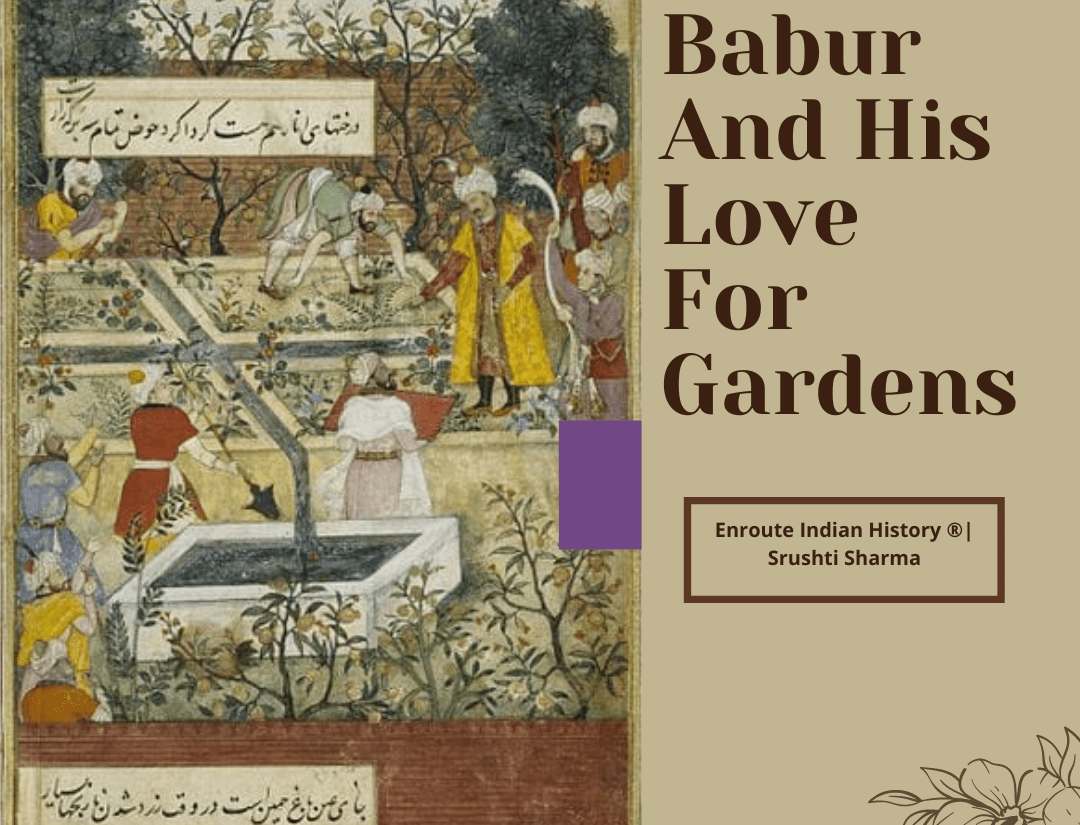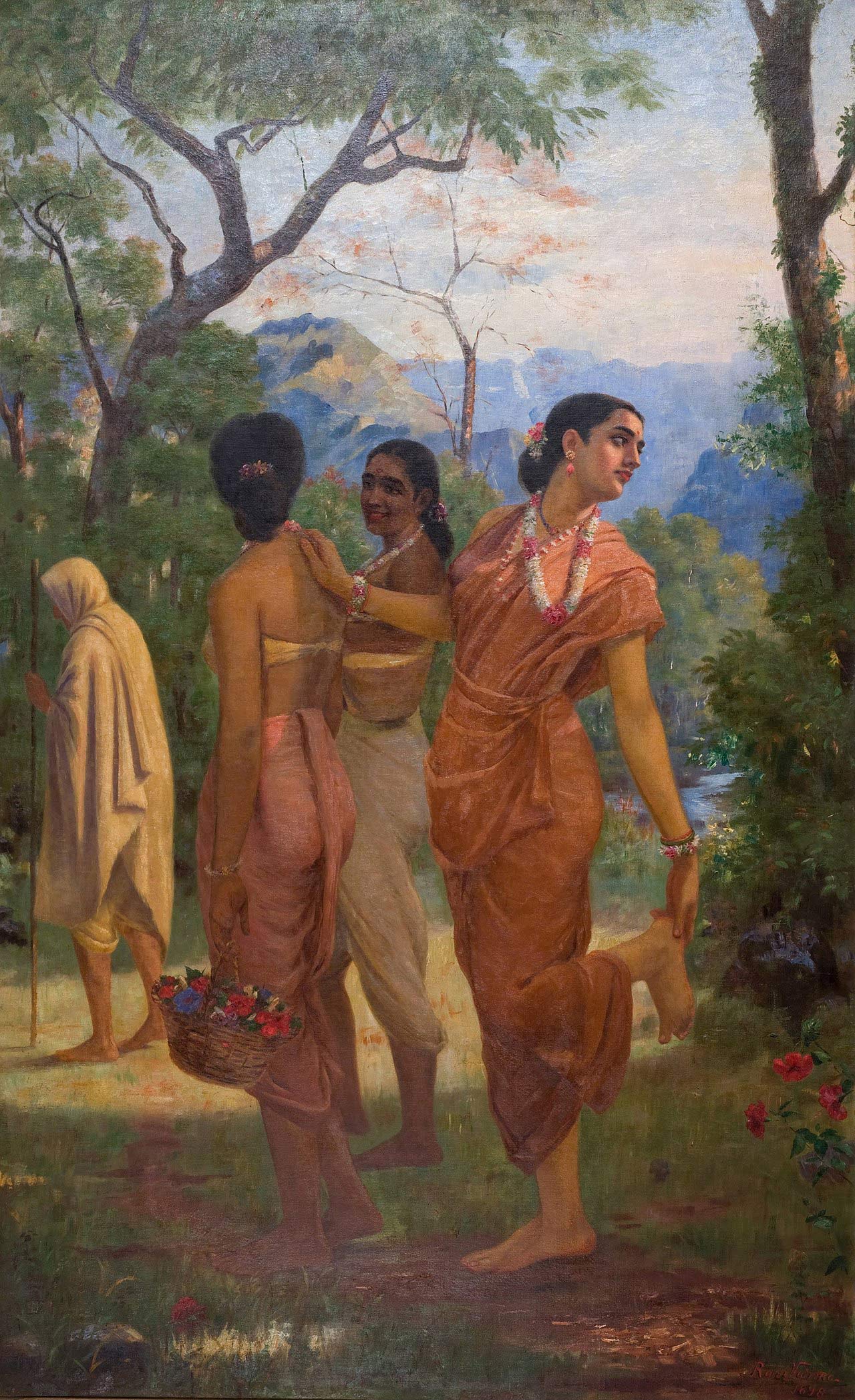
Article by EIH Researcher and Writer
Srushti Sharma
Almost every ‘sophisticated’ residential area in contemporary India is accompanied by gardens- be it the urban townships or the posh suburbs. Interestingly, gardens are not merely aesthetically soothing to eyes but also carry historical significance in the Indian subcontinent. One of the most crucial developments of medieval India was the establishment of the Mughal ( as the Europeans called them) empire, whose founder was Zahiruddin Muhammad Babur. Born in Ferghana, ruled in Samarkand and Kabul, Babur’s immediate physical surroundings were always blessed by nature’s bounty. When the emperor settled in Agra, he recalls in his memoir- Baburnama the three elements that troubled the lineage of the chaghtai-turkish in Hindustan. These were heat, violent winds and dust. Thus began the quest to construct gardens full of melons, pomegranate and other fruits along with water streams.The quest to create a home-like environment was not the only factor that inspired Babur to commission the construction of gardens. Elizabeth Moynihan remarks that Babur was a soldier first and the gardens also acted as meeting places for the aristocracy and military commanders. Paintings depict Babur himself receiving an official envoy in the pavilion of a garden. It seems that true to his Timurind lineage the founder of the great Mughal empire was more interested to rule and resolve matters of administrative importance from gardens( similar to the nomadic camps and tents) than from ornamental monuments. Moynihan rightly calls them as ‘the most elegant nomads of Central Asia’. Furthermore, the gardens were almost always designed in the pattern of charbagh , which means that the entire garden complex was divided into four parts by the flowing water streams. This symbolizes the depiction of a paradise in the holy Quran. Majorly, what characterized the gardens of Babur were high walls, water streams and fruit trees.
In Ram Bagh situated in Agra, Babur first established a charbagh and a hammam( bathing area), the latter being inspired from the architectural styles of Herat and Samarkand. The canals of the Hammam drew water from the sophisticated water system of the garden. River Yamuna became the source of water for this arrangement. Later, Jahangir also made few architectural additions to Ram Bagh. Mehtab Bagh, known popularly as Shahjahan’s moonlit garden is also believed to be made by Babur along the banks of Yamuna river. Mehtab Bagh is located just opposite to Taj Mahal. After defeating Rana Sangha in the Battle of Khanwa in 1527, Babur built his Bagh-e-Fath (victory garden) – right here Akabr built his majestic imperial city of Fatehpur Sikiri. Elizabeth Moynihan’s research on another garden of Babur, Baagh-e-Nilufar is extremely interesting. The Lotus Garden of Babur in Dholpur was one of those rare gardens which were not based on the charbagh style of architecture. It had a beautiful progression of lotus shaped pools( lotus reflecting the Indian roots), indicating the blend of local features in the Central Asian style and the emergence of Indo-Islamic architecture. Possibly, Akbar’s Fatehpur Sikiri was inspired from Babur’s Lotus Garden. The garden further provided a central point to Babur between Agra and Sikiri. Ustad Shah Mohammad, the architect who accompanied Babur from Kabul, played an important role in the construction of Lotus Garden.
Much according to his wishes recorded in Baburnama, Babur’s grave was shifted from Agra to Kabul( circa 1544) in a garden he had created during his rule in Kabul. The garden is a UNESCO World Heritage Site today and is popularly known as Baagh-e-Babur. Both Jahangir and Shah Jahan came to pay their respects to this burial and Shah Jahan even commissioned the construction of a mosque at Baagh-e-Babur. Along with Babur, his sister Khanzada and Ruqaiya Sultan Begum are also buried there. The grave is a rather simple one and is not adorned by ornamental features -signifying the Timurind lineage of this great ruler. On the grave it is written:
If there is paradise in the world, it is this. It is this. It is this.
Sources
Research Papers:
Moynihan, E. B. (1988). The Lotus Garden Palace of Zahir al-Din Muhammad Babur. Muqarnas, 5, 135–152. https://doi.org/10.2307/1523114
Koch, E. (1997). Mughal Palace Gardens from Babur to Shah Jahan (1526-1648). Muqarnas, 14, 143–165. https://doi.org/10.2307/1523242
Lectures:
https://www.youtube.com/watch?v=P9ToQ_dTkzg
Youtube Links:
https://www.youtube.com/watch?v=kfqWnorUxYQ
https://www.youtube.com/watch?v=JxmC0vHPnP8&ab_channel=WorldMonumentsFund
Internet Articles:
https://scroll.in/article/1012939/gardens-in-india-have-surprisingly-ancient-and-sprawling-roots
https://www.thehindu.com/opinion/columns/the-secrets-about-fatehpur-sikri/article21381895.ece
https://www.gardenvisit.com/gardens/bagh-e_vafa-wafa
https://www.dawn.com/news/1501423
https://www.dawn.com/news/1412060
https://www.orientalarchitecture.com/sid/845/afghanistan/kabul/bagh-e-babur-garden
https://www.archnet.org/sites/5599




















